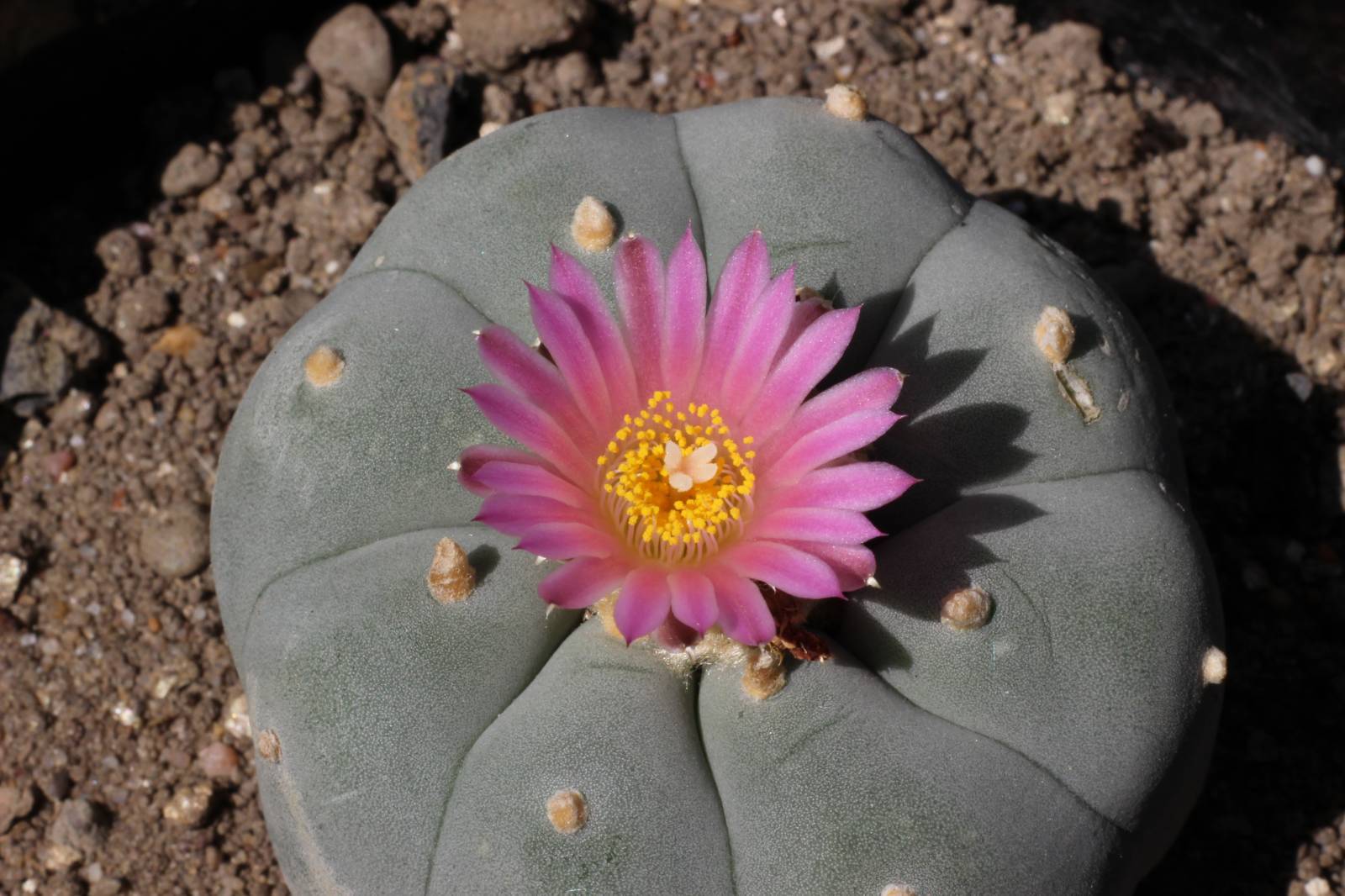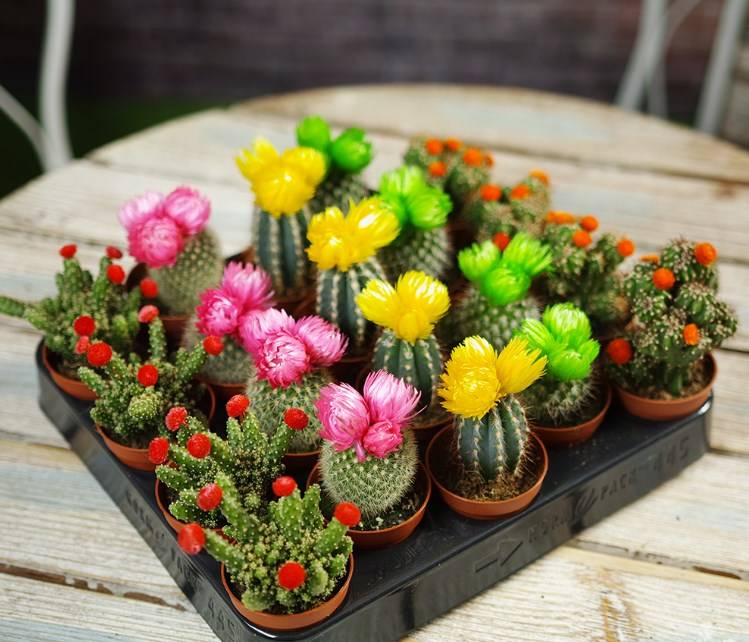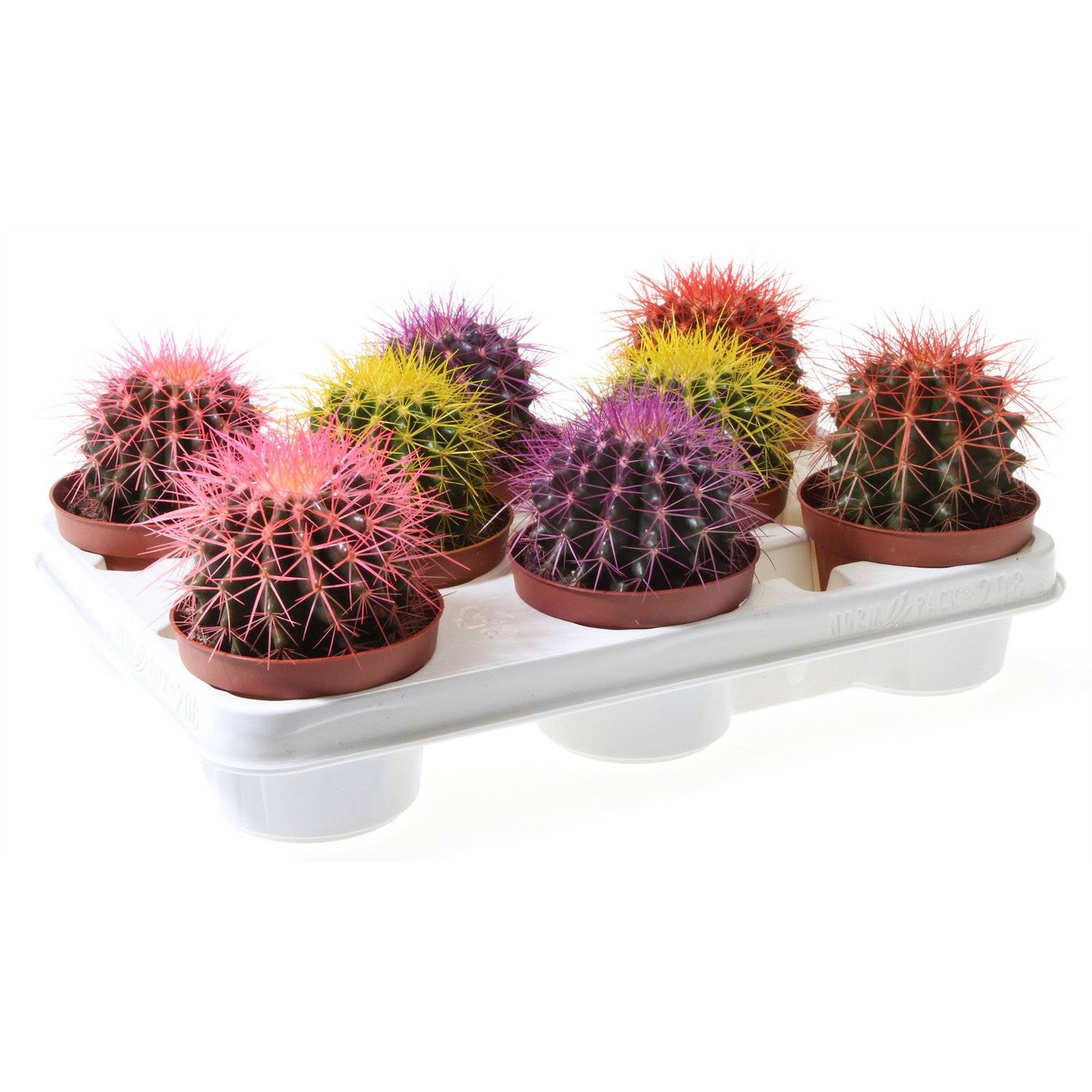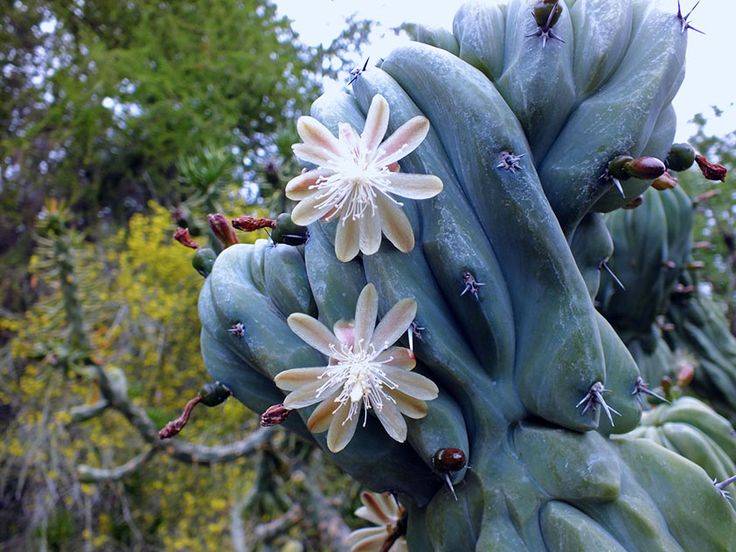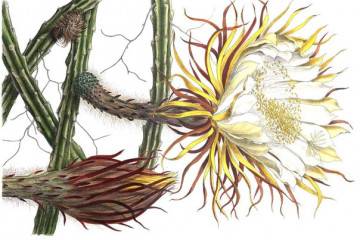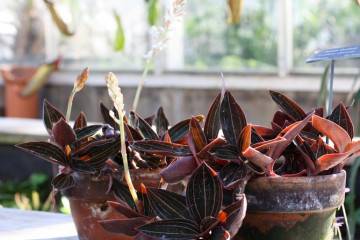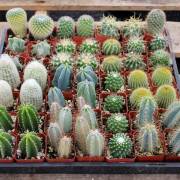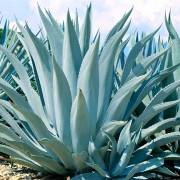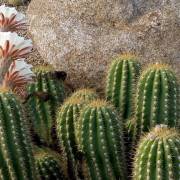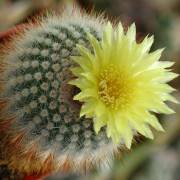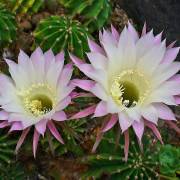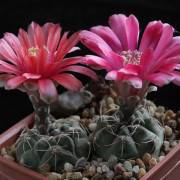Types of cacti: varieties of plants without thorns or with leaves
Content:
Flora throughout all stages of evolution has learned to adapt to life anywhere in the world. Thorny cacti are representatives of succulents, plants that can grow even in the most seemingly unfavorable conditions. They are not afraid of extreme heat and low humidity levels. At the same time, the variety of their types is simply discouraging.
Family of cactus
All cacti belong to the Cactaceae family, the Clove group (according to the biological classification). They are perennial evergreens that can be grown in the driest and hottest regions of the planet.
One unique feature allows them to survive in adverse conditions - the ability to accumulate moisture. The vast majority of representatives of the species lack leaves, but have a well-developed stem. Thanks to it, photosynthesis is carried out and moisture is retained.
Varieties of home cacti
There are dozens of types of cacti that can be grown at home. They are loved by flower growers due to their good decorative qualities and unpretentious cultivation.
Peyote cactus
The native land of the peyote cactus Lophophora Williams is considered to be the northern part of Mexico, Arizona. The decorative qualities of the plant are inconspicuous: it is a small green mass of a flattened spherical shape. During flowering, white and pink flowers are formed.
Previously, it was in great demand among Indian shamans for healing and prophecy. This is due to the fact that the composition contains a considerable concentration of the narcotic substance - mescaline. Mescaline cacti contain over 50 alkaloids. Growing peyote at home with children and pets is strongly discouraged.
Cactus mix
Home mix cacti combine several varieties. Each of them is the result of crossing different types of succulents. The most popular varieties are:
- Wall cactus is characterized by a large number of ribs that bend in small zigzags. There are not very many thorns on its surface.
- Echinocactus Gruzoni is a spherical culture, the diameter of which at home can reach half a meter. The surface is abundantly covered with large rosettes of yellow spines.
- Epostoa has won the love of flower growers with its unusual "fluffiness". It seems to be an ordinary cactus, but without thorns. Soft and long hairs grow instead.
Cactus indian line
Blooming cactus, which also belongs to mixes. The plant can look differently. Characteristics:
- Miniature dimensions.
- The presence of white spines on the stem. There may be many or not so many of them, but they are always white.
Other
It is worth considering a few more varieties that are less popular, but also deserve the attention of flower growers:
- Mamillaria are miniature plants in the shape of a ball. Their characteristic feature is that long thorns open in a cactus flower. Some varieties are completely enveloped in them. The decorative qualities are very interesting and unusual. During flowering, several flowers form at the top of the stem.
- Opuntia is an ornamental plant with a flat body and a large number of small thorns. The leaves, flower and fruits of this plant are edible.
You can buy quality seed or a small plant in specialized flower and garden stores.
Options for cacti with needles
The vast majority of succulents are protected by beautiful needles. Scientists call them modified leaves, which are adapted to survive at abnormally high temperatures.
With colored needles
There are many varieties with thorns that can be purple, silvery gray, yellowish and white. The most common are the silvery-gray spines.
If a person in the store saw cacti with red needles, then, undoubtedly, another person was involved in this. It is not difficult to paint the thorns of a succulent, and most importantly, this does not adversely affect the health of the decorative culture.
A small amount of food coloring is added to the fertilizer or water for irrigation, and the resulting solution is watered over the culture. After a short period of time, the thorns will absorb the dye and change color.
With long thorns
Most of the plants of this species have needles of medium length, but there are representatives in which the length of thorns reaches 5 cm. We are talking about:
- ferocactus;
- echinocactus;
- carnegia.
Due to the large size of the thorns, care, planting and transplanting is quite problematic.
Without needles
There are also representatives of the flora that do not have thorns.
- Epiphyllum is a long, thornless cactus that blooms very beautifully. The color of the petals of the inflorescences can be bright red, orange, pink, purple or even mixed.
- Hatiora visually very much resembles a coral bush, despite the fact that it is a representative of cactus.
It is also worth mentioning the ripsalis, which has a lot in common with hatiora. But his stems are longer and slope downward.
Examples of cactus shapes
Plants can be stars and squares, as well as leafy crops, but only flat or round in shape.
Round cacti
Most succulents have this shape. As a rule, the shape of the plant is round, and the top is flattened or pressed. Some tall varieties begin to acquire a cylindrical shape over time. Large plants have at least three stems.
Flat
Flat cacti are characterized by the presence of broad-leaved stems. In the biological classification, such plants are called prickly pears. This species includes a large number of varieties:
- Lindheimer's prickly pear;
- aciculate;
- white-haired prickly pear.
Popular cactus colors
Plants can be of different colors. The most common are grayish and green.
Pink cacti
In order for an ornamental culture to take on such a color, it needs to be slightly modified, artificially preventing chloroplasts from developing.It is these segments that are responsible for all shades of green in nature.
Red
The culture can also have a red color, but only on top. An example of such a plant is Mikhanovich's hymnocalycium. It was this that laid the foundation for the creation of colored cacti.
The upper part of the red color is a scion, which cannot exist without the rootstock - the lower part.
Blue
Blue representatives of cactus are extremely rare, but in nature there are types of blue color. This is their natural color, everything happened without human participation. The plant's name is Cereus Myrtillocactus geometrizans.
Sizes of cacti
These representatives of the flora can be of different sizes. In the wild, there are specimens whose height reaches 15 meters and a diameter of 1 meter.
Large cacti
The largest type of succulents is the giant cireus. It is this culture that, under favorable growing conditions, is capable of reaching a height of 15 meters. A record figure in 1988 was recorded in Arizona - 17.86 meters.
Small
The smallest cactus created by nature is Blossfeldia liliputana. In the wild, the plant grows mainly in mountainous areas. The diameter of an adult cactus does not exceed 2 cm. It is rarely grown at home, because it is capricious and capricious.
Examples of cacti with leaves
Picture 14. Succulent plant with leaves (pazipodium)
The vast majority of cactus plants do not have the usual leaves, but there are a few exceptions. The brightest representative with long leaves is the pazipodium cactus. The trunk of the bush stores moisture, the leaves grow only in the upper part. Visually, it has a lot in common with the Madagascar palm tree.
The length of each leaf can reach 75% of the length of the stem, which can grow up to 8 meters.
Caring for a cactus at home
Indoor cacti do not require special care due to their good health and unpretentious cultivation. The agrotechnical complex includes regular and moderate watering, loosening the soil, fertilizing with mineral, organic or complex fertilizers.
The crops are light-loving, so it is recommended to place the pots on the south or southeast side of the apartment.
There are an incredible variety of types of home cacti. Ornamental plants have different shapes, textures, sizes and colors, but this does not affect the features of care. These representatives of the flora require a minimum of attention.

